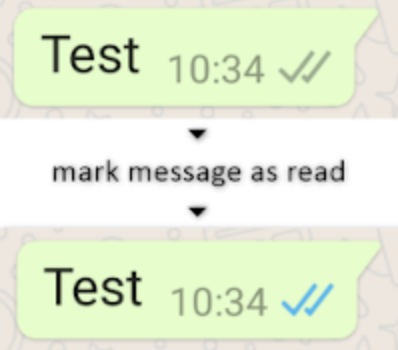Webhooks
This documentation describes how to setup webhooks for the WhatsApp Business API.
Introduction
Webhooks is a mechanism which enables applications to communicate with each other programmatically. It allows you to send real-time data from one application to another whenever a given event occurs. You can use the webhook to determine which endpoint we should forward the real-time data (aka Notifications).
Whenever a specific event occurs, the WhatsApp Business API Client sees the event, collects the data, and immediately sends a notification (user-defined HTTP callbacks) to the webhook URL specified.
There are 3 main objects you can receive via webhooks:
messages:Used to notify you when you get a new message and what is in the new message.statuses:Used to notify you when there's a status change in a message you sent.errors:When there are any out-of-band errors that occur in the normal operation of the application, this array provides a description of the error.
It is essential that your Webhook URL returns an HTTPS 200 OK response to notifications. Otherwise, the WhatsApp Business API client considers that notification as failed and tries again after a delay.
To deploy a live webhook that can receive events from the WhatsApp Business API client, your code must have HTTPS support and a valid SSL certificate.
Only use asynchronous handling of webhooks
Do not process incoming messages and notifications in the webhook handler; acknowledge immediately after receiving the webhook (with status 200), then you can process the data.
All incoming messages will automatically show as delivered (two grey ticks).
To make them appear as read (two colored ticks), you have to mark the messages as read.

Recommendations
For stable functioning of WABA it is recommended make the webhook performance as fast as possible. That means:
- Respond with status 200 immediately after receiving a notification (the callbacks payload should NOT not be processed before responding, but ack first then process).
- If it’s possible, locate a webhook servers somewhere with low latency to Cbot datacenter.
- Sending one message as opposed to getting one causes up to
threecallback notifications (sent,deliveredandread). It means that the speed of processing concurrent requests should increases in accordance with the load of the number. In addition to a direct increase in the speed of processing notifications, we recommend to make your webhook process as many parallel requests as possible. Otherwise, this can lead to the occurrence and overflow of the message queue.
Webhook URL
The webhook URL is a resource address to which the WhatsApp Servers sends notifications, which are triggered by specific events. A suitable webhook URL must be supplied by you or by your Partner Software Provider / ISV.
You only need to set your Webhook URL once. Although you can update it or remove it at any time.
You must set a Webhook URL once per number.
If you generate a new API-KEY, the webhook URL for that number will be removed. So you must reset it using the new API-KEY.